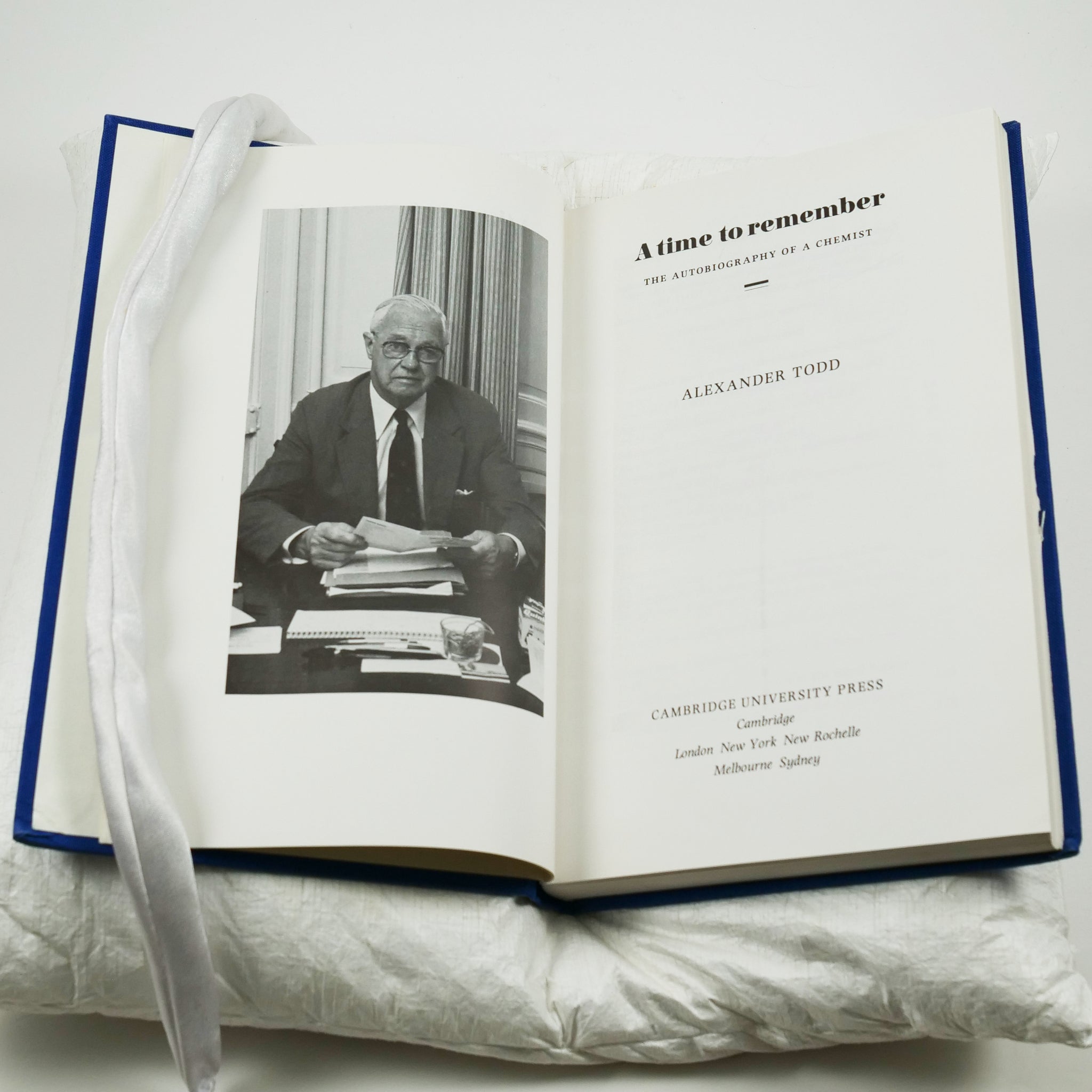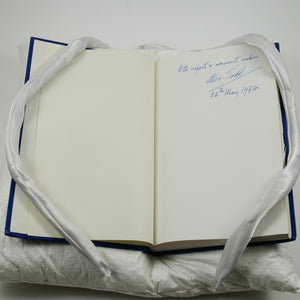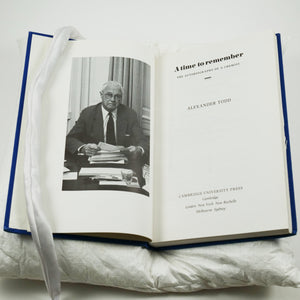(Brenner, Sydney) Todd, Alexander | A Time to Remember. The Autobiography of a Chemist
£450.00
-
First edition, first impression. From the library of Nobel Prize-winning biologist Sydney Brenner, presentation copy inscribed from the author to Brenner on the front blank, “With respect and warmest wishes, Alexander Todd, 24th May 1984”.
The author, biochemist Alexander Todd (1907-1997), was awarded the Nobel Prize in chemistry in 1957 “for his work on the synthesis of nucleotides (the small units that make up the larger molecule of nucleic acids), the hereditary material of cells. This work led to many important advances in chemistry and biochemistry”, including the elucidation of the structure of DNA by Watson and Crick (Shampo, “Alexander Todd”, Mayo Clinic Proceedings, March 2012).
Recipient Sydney Brenner was a leader in the field of genetics almost from the moment he received his doctorate at Oxford in 1954. He joined Francis Crick’s laboratory in 1956, and they did groundbreaking research on how DNA is decoded by cells. Brenner proposed that the nucleotides which comprise DNA (adenine, guanine, thiamine and cytosine) are read by the cell in sets of three called codons, with each codon representing an amino acid (for example, three adenines in a row is the codon for the amino acid lysine). A gene is simply a string of codons that directs the production of a protein molecule from individual amino acids. He also correctly predicted the existence of messenger RNA, the molecule that carries the genetic code from the nucleus to the ribosomes, where the translation process occurs.
Following this work, it was Brenner’s efforts to establish a new laboratory organism for the study of genetics that led to his Nobel Prize. “Beginning in 1965, he began to lay the groundwork to make C. elegans, a small, transparent nematode, into a major model organism for genetics, neurobiology and developmental biology research. As a direct result of his original vision, this tiny worm became the first animal for which the complete cell lineage and entire neuronal wiring were known. Today, more than 1,000 investigators are studying C. elegans, and Brenner’s work was further honored when a closely related nematode was named Caenorhabditis brenneri” (Salk Institute biography).
-
Cambridge: Cambridge University Press, 1983.
Octavo. Original blue cloth, titles to spine in silver. With the dust jacket. Remnants of a price sticker to the front flap of the jacket. Lower corner bumped. An excellent copy in the lightly rubbed jacket that is a little faded along the spine panel.








